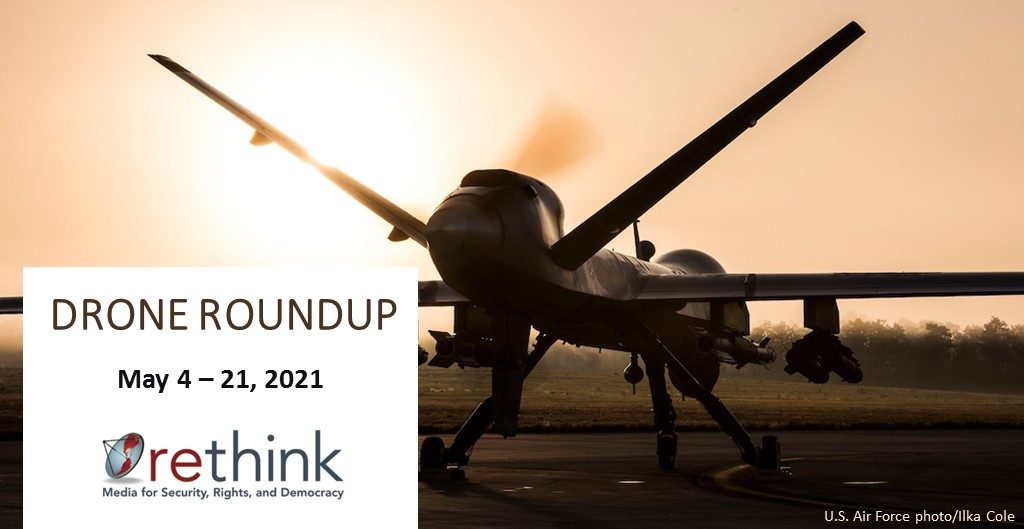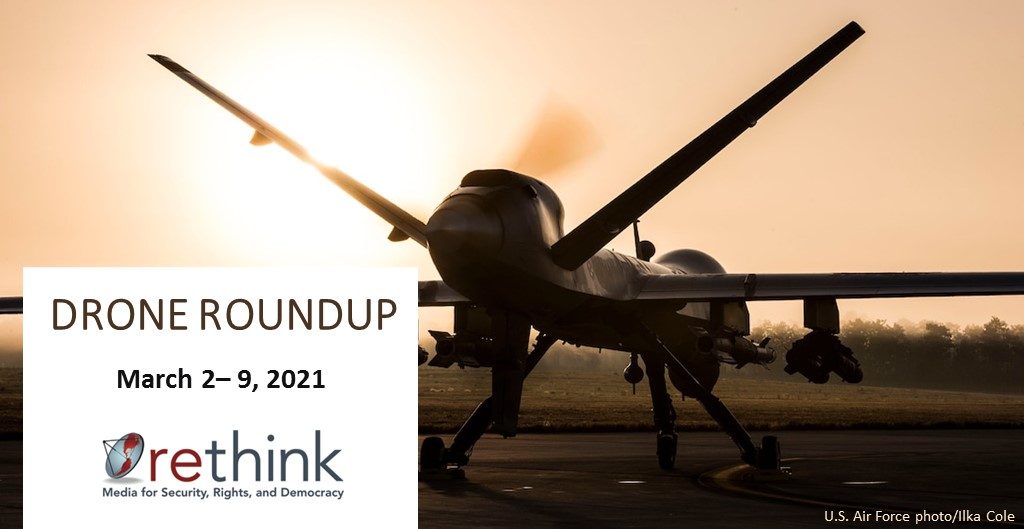Development and use of drones has witnessed a steep increase over the last decade. Domestic production of drones in various shapes has put Ukraine in the front row of upcoming drone producers.
The ongoing conflict in Ukraine’s Donbas region against Russia-backed separatist resulted in various application of drones by all parties involved. Reports have found an extensive use of UAVs by both Ukrainian armed forces (UAF), pro-government non-state groups, Russian, and Russian-led separatist forces. In 2020, the Ukrainian military deployed Turkish Bayraktar TB2 drones for the first time.
Prior to the Russian annexation of Crimea, Ukraine’s military relied on Soviet-era Tu-143 “Flight” drones for reconnaissance. These unmanned aircraft are severely dated and technologically inadequate, and were easily shot down by Russian-backed separatists. Since the start of the conflict in 2014, more modern UAV systems are increasingly being produced and used on both sides of the contact line in Eastern Ukraine.
In late 2014, a series of small, commercially developed drones began to emerge in the conflict. Because of a lack of financial resources for the Ukrainian military, Ukrainian forces got creative in the acquisition of UAV systems. Small, tactical drones were built by private manufacturers and partly financed through crowd-sourcing initiatives. In 2019, the Ukrainian Air Force took delivery of armed Turkish Bayraktar TB2 drones. Ukraine’s President Petro Poroshenko ordered to “accelerate all necessary measures to train Ukrainian servicemen (to operate the drones),” and to use the drones at Ukrainian frontline combat formations as soon as possible. In 2020, the drones were used for the first time.
Russian-backed separatist and/or Russian troops in the Donbas operate a variety of drones, including the Russian Orlan-10 and Forpost UAV. A Ukrainian Major General stated in a presentation in 2019 that the armed forces of Ukraine identified 641 cases in which Russia and Russian-backed forces employed UAV’s in 2017 and 250 in 2018. The United States has warned several times about Russia’s “massive use of drones” on the battlefield, and has itself supplied the small, unarmed, handheld RQ-11B Raven drones to the UAF.
The A1-CM Furia (Fury) is one of the smallest drones used in the Ukrainian conflict. The Fury is equipped with multiple satellite navigation systems and can perform missions such as artillery reconnaissance, observation and patrol flights and aerial photography. The PD-1, one of the drones developed with the help of crowd-sourced funds, was first introduced in October 2016 by its Ukrainian-based developer Ukrspecsystem and is currently in service with the Ukrainian armed forces. This gas-powered drone is capable of performing military and civilian missions such as surveillance, intelligence, observation, aerial photography and reconnaissance. In addition, the PD-1 has been equipped with the ability to take-off and land vertically.
The largest domestically produced drone up to this date is the AN-BK-1 Horlytsia (Turtle Dove), which has been developed to perform Intelligence, Surveillance, Target Acquissitona and Reconnaissance (ISTAR) tasks and is capable of carrying a 50 kg payload. Next, there is the Yatagan-2 (Scimitar), which was presented in 2016 and is a loitering munition with a 12km range strike capability. A recent presentation of the new Sokil drone system by the Ukrainian National Security and Defense Council (NSDC) illustrates the new trend towards ‘kamikaze’ drones, which are capable of carrying high-explosive munitions. Lastly, the Ukrainian company Antonov recently unveiled a scale mock-up of an as of yet unnamed drone capable of reaching altitudes of 12km, and carrying a 400kg to 600kg payload. This High-Altitude, Long-Endurance drone will supposedly carry nine pods with payloads to carry out both ISTAR and strike missions. In 2020 Ukraine unveiled the new lightweight loitering weapon system ‘RAM’, which can be used for reconnaissance and attacks.
The primary use of drones remains mainly in eastern Ukraine. In the conflict, which has already killed more than 10,000 people, tactical UAV systems are mainly being used for ISTAR tasks.
The Organization for Security and Cooperation in Europe (OSCE) has tried to use Shiebel Camcopter S-100 drones to monitor the line of contact between warring parties, but these drones have been frequently jammed or shot down by rifle fire and anti-aircraft missiles.
Articulate clear policy
With the announcement of the new Sokil drone system, the Secretary of the NSDC Oleksandr Turchynov emphasized the importance of “high-quality unmanned aerial vehicles” for the Ukrainian Armed Forces (UAF). Turchynov revealed in his statement that soon new types of UAVs with a longer range and increasingly “powerful combat characteristics” should be expected. He announced he would increase the security and defense budget, as they remain the country’s top priorities in 2018.
Ukraine’s modernization efforts could be understood from its ambition to become a NATO member. The country’s ministries of Defense and Foreign Affairs regularly execute new policies aimed at meeting NATO standards. Drones have been used in joint military exercises with NATO countries. Since the outbreak of the conflict in 2014, Ukraine has also increasingly received support from the NATO, mainly in the form of military education, training and increased data sharing.
Despite the prominence of drones in military thinking, there has been no serious political debate on what the dangerous implications of the use of drones are, and the issues their use has caused in other parts of the world.
Control proliferation
Ukraine has signed the Joint Declaration for the Export and Subsequent Use of Armed or Strike-Enabled Unmanned Aerial Vehicles and is also a member of the Wassenaar Arrangement which was the first global multilateral arrangement on export controls for conventional weapons and sensitive dual-use goods and technologies. Ukraine is a party to the Missile Technology Control Regime, which aims to restrict the proliferation of, amongst others, missiles, complete rocket systems and unmanned aerial vehicles. Ukraine has not signed the Arms Trade Treaty, which also controls the export of unmanned combat aerial vehicles.





